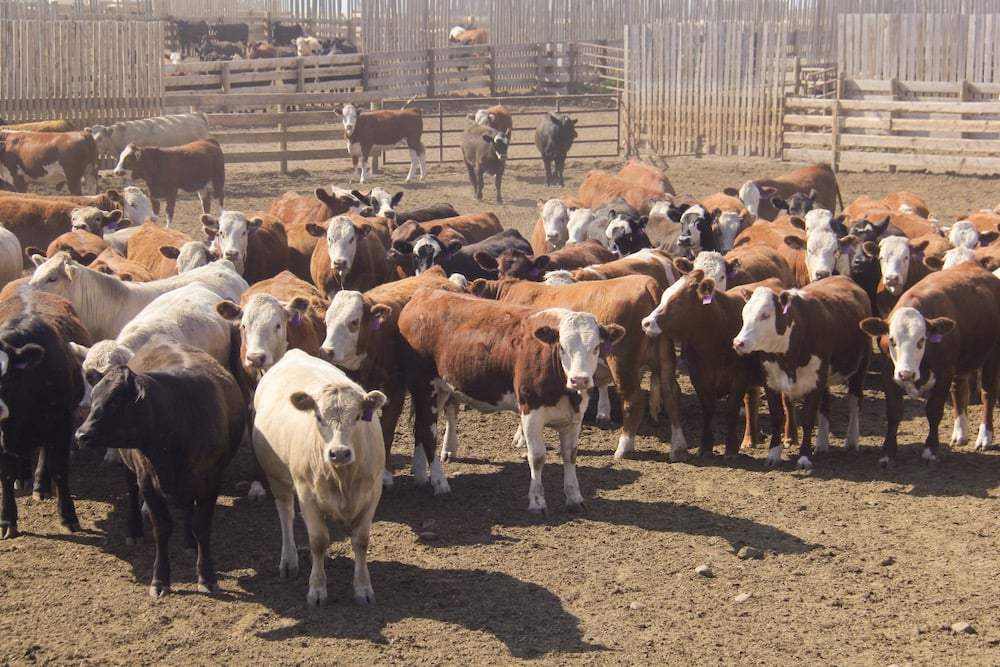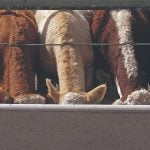For the week ending Sunday, western Canadian feeder cattle markets traded $6-$8 higher. In some cases, quality yearling packages traded as much as $10 above week-ago levels. Live and feeder cattle futures closed the week US$8-$9 higher as traders monitored flooding conditions in Texas. Alberta packers were buying fed cattle on a live basis in the range of $240-$241/cwt delivered, up from the quotes seven days earlier of $238-$240/cwt.
Feeding margins continue to percolate higher as the fed cattle market experiences a counter-seasonal trend. Stronger buying interest was noted across all weight categories. There was limited slippage on fleshier types in the heavier weight categories. In some cases, the heifer discount to steers appeared to narrow, with finishing operators anxious to secure numbers for the fall period. Auction market volumes will decline over the next month and tighter supplies continue to underpin the overall feeder complex.
Read Also

U.S. livestock: Feeder cattle rise to new highs on tight supply, strong cash prices
Chicago | Reuters – Chicago Mercantile Exchange feeder cattle futures rallied on Thursday to a record high on strong cash…
In central Alberta, larger-frame mixed steers carrying very light butter on silage diet with full health data averaging 850 lbs. dropped the gavel at $290. In the same region, Simmental-blended, light-flesh heifers with processing records averaging just over 810 lbs. notched the board at $270. In central Saskatchewan, a smaller group of Angus-blended steers on the board at 820 lbs. reached up to $293. Northwest of Winnipeg, medium- to larger-frame black heifers with medium flesh levels averaging 850 lbs. were quoted at $256.
In southern Alberta, medium- to larger-frame black steers on forage diet scaled at 710 lbs. set the bar at $320. In the same region, tan heifers with thinner frames averaging 725 lbs. were valued at $297. In Manitoba, a smaller group of red and black steers weighing 675 lbs. were last bid at $343.
South of Edmonton, a smaller group of mixed steers weighing 630 lbs. traded for $355; in Lloydminster, a small group of 640-lb. black steers sold for $345. Southeast of Saskatoon, tan steers averaging just over 600 lbs. were quoted at $360.
In central Alberta, mixed steers weighing 530 lbs. were valued at $373 and tan steers weighing just under 500 lbs. were last quoted at $395. In the same region, tan heifers averaging 500 lbs. traded for $331. The market was relatively flat across the prairies for feeders under 550 lbs.
Flooding in Deaf Smith County in Texas’ Panhandle has caused cash and futures markets to incorporate a risk premium. John Robinson, senior vice-president for communications for the National Cattleman’s Beef Association, stated that social media accounts of mass losses were inaccurate. When weather turns favourable and actual cattle loss is known, the risk premium in the market will erode.
— Jerry Klassen is president and founder of Resilient Capital, specializing in proprietary commodity futures trading and market analysis. Jerry consults with feedlots on risk management and writes a weekly cattle market commentary. He can be reached at 204-504-8339 or via his website at ResilCapital.com.
















